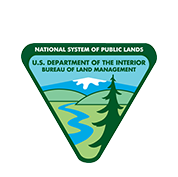Single Publication
Could not determine your location.
May 9, 2023 - Areas north of Durango may experience smoke Prescribed Burn
Animas City Mountain Prescribed Burn
Publication Type: Announcement 05/10/2023
Areas north of Durango may experience smoke from the Animas City Mountain Prescribed Burn. Although any major public health impacts from smoke are unlikely, light to moderate concentrations of smoke are possible near prescribed burns.
Here are a few mitigation tips from our partners in public health, San Juan Basin Public Health.
If there is smoke in your neighborhood, visit SJBPH Wildfire & Air Quality Resources bit.ly/3vBEsfL.
How to Protect Your Health Stay indoors
• Close windows and doors to reduce exposure to smoke
• If doors and windows are left open, particle levels indoors and outdoors will be about the same.
• When air quality improves, even temporarily, residents should “air out” their homes to reduce indoor air pollution.
• If outdoor temperatures are very high, those without air conditioning to stay with friends or with family members who do, to go to a cleaner air shelter in their community, or to leave the area to avoid heat exhaustion or heat stroke. Use air conditioners.
• Homes with central air conditioners generally have lower amounts of outdoor particles indoors compared to homes that use open windows for ventilation.
• Most air conditioners are designed by default to re-circulate indoor air. Those systems that have both “outdoor air” and “re-circulate” settings need to be set on “re-circulate” during fire/smoke events.
o For newer air conditioners with a "fresh air ventilation system" that brings in outdoor air continuously or semi-continuously, the “fresh air” component of the system should be turned off during smoke events.
• Little is known about the impact of using various types of room air conditioners (e.g., window units) and their air filters on indoor smoke concentrations in homes.
• Reducing physical activity to lower the dose of inhaled air pollutants and reduce health risks. Reduce other sources of indoor air pollution.
• Smoking cigarettes, using gas, propane and wood-burning stoves and furnaces, spraying aerosol products, frying or broiling meat, burning candles and incense, and vacuuming can all increase particle levels in a home and should be avoided when wildfire smoke is present.
• “Room-vented” or “vent-free” appliances such as unvented gas or propane fireplaces, decorative logs, and portable heaters can especially contribute substantial quantities of particles.
• Surgical masks are not designed to capture a large percentage of small particles and will not prevent the wearer from breathing in airborne particles such as contained in wildland smoke.
• Covering the mouth with a (damp or dry) bandana, handkerchief, or tissue also will not prevent the wearer from breathing in airborne particles.

 InciWeb
InciWeb